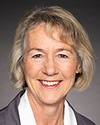The only variation is that reserve units can be at a source of information or a point of contact, as opposed to the regular force who must initiate the process at a recruiting centre. The army and the navy use their local units as an attraction centre, to assist with the initial processing, although all files, regular and reserve, primary reserve, and our cadet instructors, must go through the recruiting processing that is centralized across the Canadian Forces recruiting group. There are different standards and different testing for those on the cadet side of the house and Canadian Rangers. The primary reserve recruiting process is exactly the same as the regular force, with the exception, as I say, of being able to do part of the processing at a local unit.
Evidence of meeting #52 for National Defence in the 41st Parliament, 2nd session. (The original version is on Parliament’s site, as are the minutes.) The winning word was aircraft.
A recording is available from Parliament.



